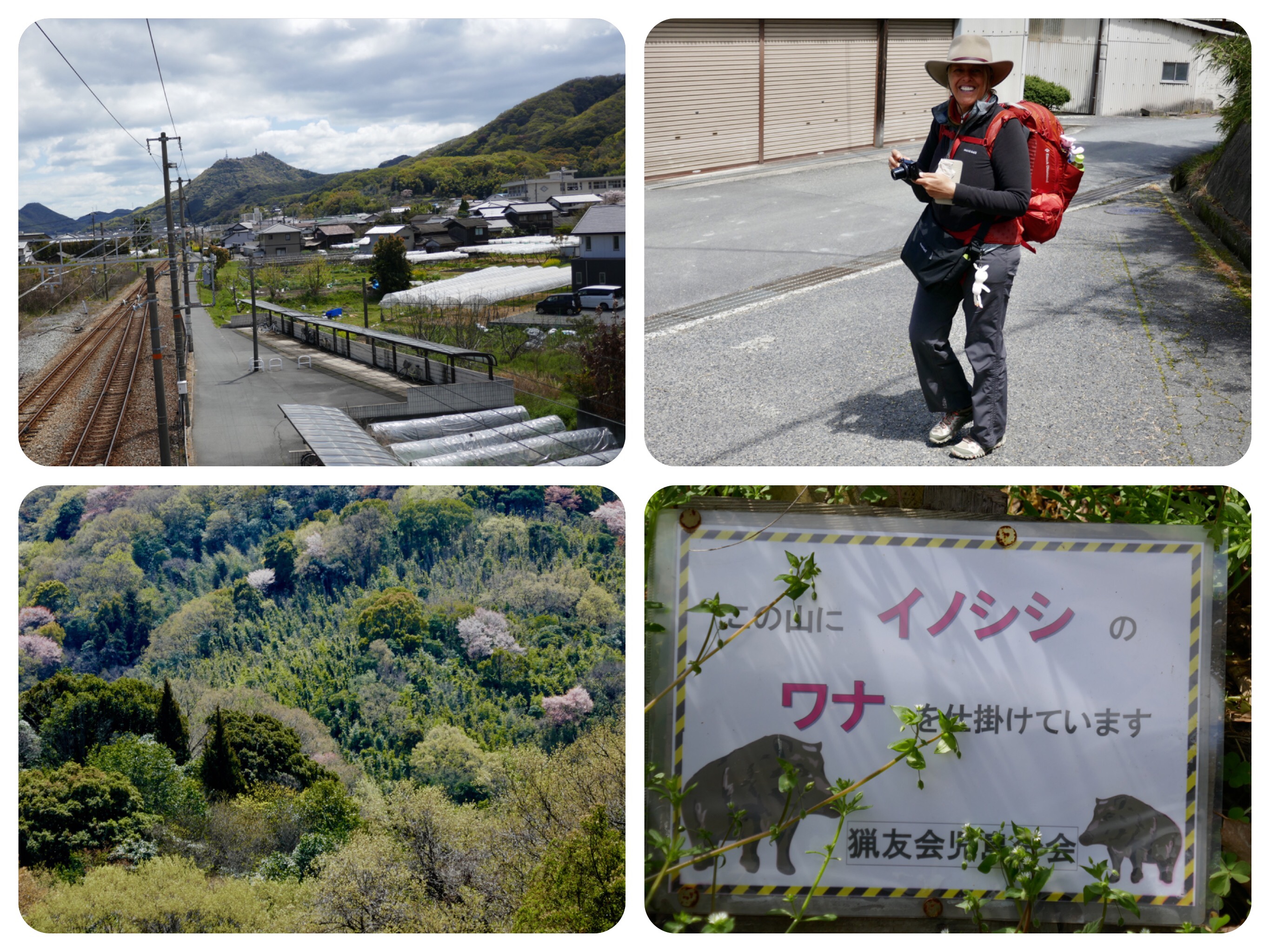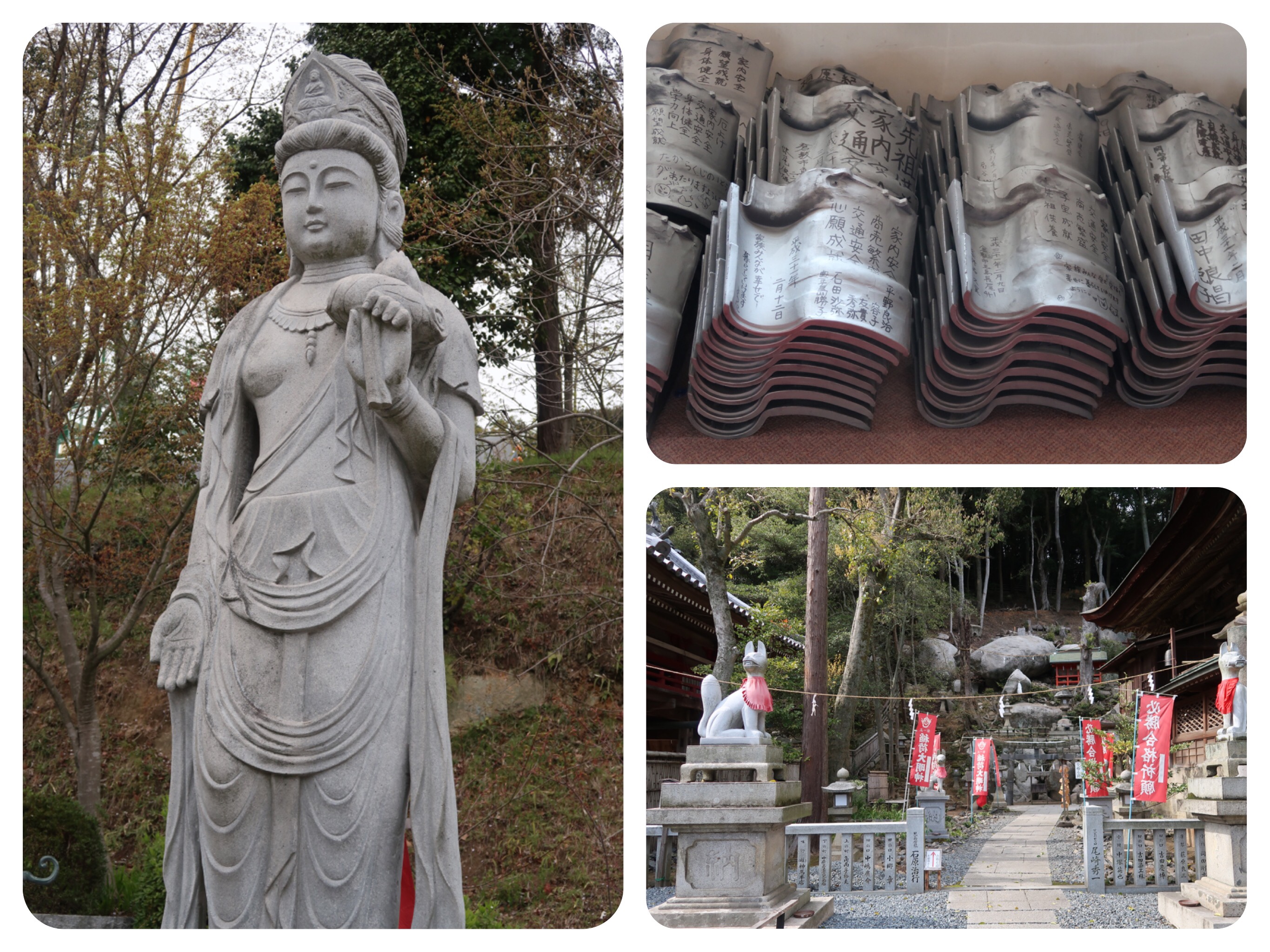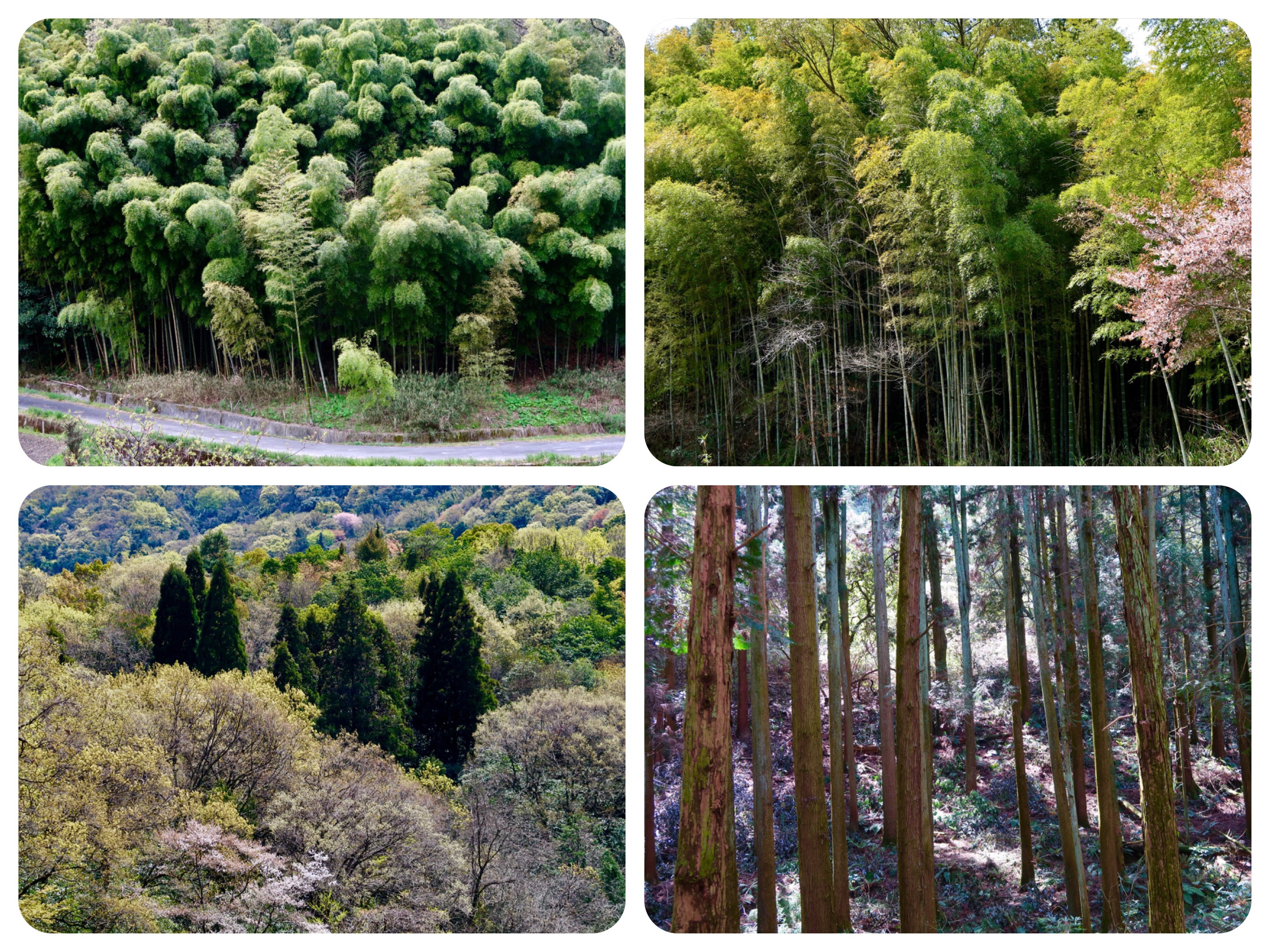Day 5 - The Chūgoku 33 Temple Kannon Pilgrimage, Japan - The World's Largest Wooden Fudo Myoo in Rendaiji Yugasan Temple, Kurashiki, Japan


























Day 5 - The Chūgoku 33 Temple Kannon Pilgrimage, Japan - The World's Largest Wooden Fudo Myoo in Rendaiji Yugasan Temple, Kurashiki, Japan
The way I prefer to walk pilgrimages is simply to walk from place to place, arriving on foot at my selected hotel or guest house by the end of the day.
But in this pilgrimage, that is not always possible.
Up until today, we had to stay in Okayama and walk to the first temples along the route, and then take a train in the evening back to our hotel.
We were very careful to always start the next day where we stopped the night before, but coordinating trains to return back to the trail takes some time.
This is why I was happy to strap on my backpack, check out of the hotel and return to the slopes of Yugasan mountain, where we had stopped walking two days ago.
This was the first day in the pilgrimage in which we climbed a mountain with our full (and heavy) backpacks.
I had scheduled it to be a short day (only 15 Kilometers), and I booked us a stay at our first Onsen hot springs hotel of this trip.
Yugayama is the Spirit deity of Mount Yuga, and she is beautiful indeed.
The mountain range are naturally planted with many varieties of trees, blooming Sakura and bamboo groves.
The trees were full of birds, singing along as we climbed up and down over small peaks and then up and up.
A small farm stand stood along the way, and we stopped to buy grapefruits, depositing the money in the honesty box.
The mountain is not very tall, and we found that climbing the 1150 feet to the top was not too hard.
We had to stop a few times to take off our fleeces and drink some water, but it was a beautiful and enjoyable walk.
The Buddhist temple complex is intertwined with the Yuga Jinja shrine.
When we arrived, we took off our backpacks and sat in the temple’s cafe to have a refreshing Matcha tea and some soba noodles.
The area is full of blooming cherry trees and an ancient two story pagoda rises up between the trees.
It was also the biggest temple and the most attended we have seen thus far on this pilgrimage.
We first visited the Jinja shrine, dedicated to the Kompira Kami Spirit.
Kompira Kami is believed to be a dragon king sea deity who offers protection.
The ancient temple was founded about 1300 years ago.
It hosts many amazing wooden statues, including an 11-faced Kannon Goddess carved from a fragrant piece of wood that emits light.
There is also an Amitabha Buddha, representing a vow to spread happiness among people, and a Yakushi-nyori, the healing Buddha.
At present, a massive new temple hall is being built up the hill, with a completion date of 2022.
To raise money from donations, people can buy/sponsor a beautiful roof tile of silver grey.
This temple has a very large Nokyosho, where they stamped our pilgrims’ book and scroll.
A few people worked in the office, clearly prepared for the crowds.
We gave them the book and the scroll and they gave us a number and asked us to go upstairs to the main hall.
A large group of high school kids rushed to take off their shoes and run upstairs before us.
For a moment, I regretted that we had not come fifteen minutes earlier than the large group, but almost immediately an inner voice told me:
“This is not the right way to think. EVERYTHING happens for your highest good and with perfect timing.”
We stayed downstairs for a bit longer and photographed the amazing statues of Kannon, and then we walked upstairs to the main hall.
We saw that the kids were all seated in front of the altar.
A Buddhist ceremony, arranged especially at that time for their visit, had just started.
We sat and listened to the prayers, the drumming and the chanting, feeling so fortunate to be there right at the RIGHT time, or we would have missed this wonderful ceremony.
The end of the ceremony included the heart sutra chant and another chant in which the priests were fanning a large sutra book like a deck of cards, clapping in rhythm to the drumming, that touched my heart.
When the priests were done, one priest, beautifully clothed in a green kimono with a large ornate belt, walked over to the group with a hand held flag made of gold plated straps of metal with golden bells hanging down.
He brushed it methodically over each person’s head.
I told Jules to bow down his head and we too were brushed on the head with the jingling bells.
The lower level of the temple hosts the world's largest wooden Fudo Myo-o deity, seated with a ring of fire around him.
Fudo Myo-o is an important deity in Japanese Buddhism.
His statue can be seen in many temples in Japan, on mountains or forest trails, and by waterfalls.
His Sanskrit name is Mahakala and in Japanese his name is written 不動明王, meaning “The immovable wisdom king”.
He is a powerful guardian of the truth and one of the five Wisdom Kings in Buddhism.
Fudo Myo-o is always depicted as a fierce and powerful deity, sitting in the midst of fire with his left eye partly closed.
Often he is sculpted with his canine teeth sticking out.
The very large dark blue Fudo Myo-o in the temple is very impressive.
He reminds us to convert anger into compassion, and fiercely overcome all negative feelings and inner demons to liberate us from suffering through self-control.
His vow is to bring forth the teachings of the Buddha to the world.
The temple was nearly closing when we left.
It had also gotten colder, and the promise of a hot spring bath was so appealing to us.
We walked down the hill to our Onsen hotel and checked in.
We got a spacious Japanese Tatami mat room with a stunning view of the blooming Sakura trees on the mountain slopes.
We were served tea and a mochi rice sweet.
We changed into clean and ironed summer kimonos, and went to the hot spring to have a soak.
As always in Japan, the Hot Spring baths were separated for men and women, so everyone can soak naked.
I was in the pool mostly by myself, enjoying the thermal healing waters.
Dinner and breakfast is included in the room rate, and there no other places to eat dinner on the mountain.
We went to dinner wearing our summer kimonos.
Dinner was a Kaiseki feast of 13 courses, each featuring different ingredients, styles of preparation and tastes.
Maybe during Festival times, this place is packed with tourists.
It is big enough to accommodate large groups.
But tonight there are no foreign tourists in the hotel at all, just a few Japanese guests who have come to worship and renew themselves in the quiet energy of the serene mountains.
This is the Japan that we absolutely love.
A beautiful Mountain with flowering trees and bamboo groves that look like spirits bowing in the wind, an amazing temple that started in the year 700 AD, an amazing shrine, and to top it all, a hot spring hotel with traditional hospitality, serving amazing gourmet meals....
I feel almost sad to be leaving tomorrow.
Tomorrow, we have a long day of walking to a very important temple.
Meantime, I send you my blessings and love,
Tali
Daily Stats:
Steps: 19,849 steps
Distance Walked: 15 Kilometers
Active Walking: 4 hours
Total Time: 5 hours including the time spent visiting the Temple and Yugasan Shrine.
Total distance walked on the pilgrimage so far: 117 Kilometers
Temple Visited: Temple #6, Rendaiji Yugasan Temple 蓮台寺 in Kurashiki.
Accommodation: Kurashiki Yuga Santoka Onsen Ryokan.
They offer spacious Japanese style rooms, hot spring baths, and a very tasty Kaiseki dinner and breakfast.